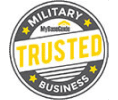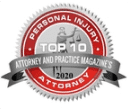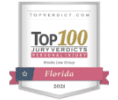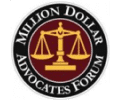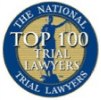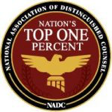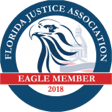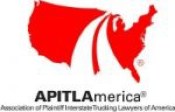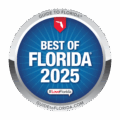The most dangerous intersections in Florida are notorious for their high number of collisions. Beyond what the locals see on the streets every day, the statistics tell a shocking story.
According to the Florida Department of Transportation (FDOT), 30 percent of Florida traffic fatalities occur at intersections. And a recent analysis of the deadliest intersections in America found four of the Top 10 counties for total intersection deaths were in Florida ― namely, Miami-Dade, Broward, Hillsborough, and Palm Beach counties. Also, Levy County had the unpleasant distinction of having the second-highest rate of intersection fatalities per 100,000 people.
In addition, the most current Florida Strategic Highway Safety Plan shows Florida saw a whopping 27 percent increase in traffic fatalities and just a four percent decrease in serious injuries from intersection accidents over a four-year period. Nearly 900 people lost their lives, and roughly 6,800 suffered serious injuries from intersection collisions during that time.
The truth, consequently, is ugly but clear: The Sunshine State’s intersections are scary places for travelers.
So, where are the biggest danger zones in Tampa and the surrounding communities? The answers could be closer to home than you think. Therefore, you should keep reading to learn more and keep your eyes open anytime you’re near an intersection in Central Florida.
What about the most dangerous intersections?
Intersections can be signalized, controlled by official traffic devices, or unsignalized. Such unsignalized intersections are controlled by stop signs, yield signs, or sometimes nothing at all.
Tampa has 550 signalized intersections within its city limits. Beyond these, hundreds of thousands of other intersections ― both signalized and unsignalized ― are located throughout Hillsborough County.
Car accidents are more likely at the most dangerous intersections because they are busy areas where motor vehicles, pedestrians, and bicyclists meet. As a result, nearly two million U.S. traffic accidents occur at intersections annually. In addition, the Federal Highway Safety Administration reports that roughly half of all car accident injuries and one-quarter of traffic deaths per year result from intersection crashes.
Intersections can be dangerous for many reasons:
- Multiple entry points: Most Dangerous Intersections have many entry points, making them more difficult for drivers and other road users to navigate. Accordingly, the greater the number of places where commuters could cross paths, the higher the risk for collisions and injuries.
- Bad drivers: According to the National Highway Traffic Safety Administration (NHTSA), 96 percent of intersection accidents are due to some form of driver error. Examples include distracted driving, making an illegal maneuver (e.g., red-light running), speeding, or aggressive driving. Furthermore, drivers are prone to “decision errors” in intersections, such as making incorrect assumptions about another’s actions or misjudging the speed of an oncoming vehicle.
- Older drivers: FDOT reports that many of Florida’s intersection accidents involve older drivers. Intersections are tricky no matter what but can become more challenging as a senior’s visual, mental, and physical abilities decline.
- Left turns: Many of the most dangerous intersection crashes happen when drivers turn left. Left turns are particularly hazardous for several reasons. First, drivers typically accelerate into left turns. Besides, they expend more mental effort while turning left since they must judge when it’s safe to cross in front of traffic and simultaneously watch for pedestrians on the road.
- Less visibility: Trees, buildings, signs, poor lighting, and also other vehicles can make it tricky to pass through an intersection safely. In addition, smaller road users, such as pedestrians, cyclists, and motorcyclists, can be completely obscured depending on the surrounding conditions. These hazards give everyone less time to react to avoid an intersection accident.
- Right-of-way mixups: Knowing who is legally allowed to proceed in an intersection is critical for everyone to cross safely. Hence, when road users disobey Florida right-of-way laws at intersections, collisions are more likely to happen.
Tampa’s Most Dangerous Intersections
Tampa is home to many problematic intersections. These include:
Sheldon Rd/ Waters Avenue W
A transportation advocacy group recently ranked Sheldon Road at Waters Avenue West as the most dangerous intersection in Tampa. Over just 15 months, this suburban intersection experienced 107 crashes.
Beyond that, the Waters Avenue area is a trouble spot in other places: Over 200 intersection accidents occurred where Waters meets Anderson Boulevard and Hanley Road during the same time period. That amounts to about one intersection accident per day within just a three-mile radius, according to the organization’s data.
Hillsborough Ave W/Sheldon Rd
There were 96 collisions at the intersection of Hillsborough Avenue and Sheldon Road in Tampa’s Town ‘n’ Country area. This large intersection spans six lanes on one side, therefore increasing the likelihood of bottlenecks during peak commute times.
U.S. 301/Gibsonton Dr. and Big Bend Rd
Traffic congestion is a major problem in the growing area of Hillsborough County along U.S. 301, Gibsonton Drive, and Big Bend Road. Gibsonton Drive is known for its high number of left-turn accidents, motorcycle crashes, and also collisions caused by aggressive driving, speeding, and failure to yield. For example, a total of 95 accidents occurred at the intersection of U.S. 301 and Gibsonton Drive over 15 months.
Highway 301 is also one of the most dangerous intersections with Big Bend Road, where 86 crashes occurred during the same timeframe.
Neighborhood expansions and industrial development have prompted ongoing road projects to reduce heavy traffic in the area, including widening Big Bend Road to six lanes between U.S. 41 and Highway 301. Additionally, plans are underway to improve the juncture of Big Bend Road with I-75 to ease traffic flow. A new traffic signal, for example, will be installed at the intersection of Big Bend Road and Industrial Drive.
Bruce B. Downs Blvd/Fletcher Ave E
The intersection of Bruce B. Downs Boulevard and Fletcher Avenue in Tampa saw 84 accidents over 15 months. According to NewsTalk Florida, jaywalking is a longstanding problem on Fletcher Avenue. The stretch along Fletcher Avenue between Nebraska Avenue and Bruce B. Downs Boulevard had the highest crash rate in Hillsborough County involving bicycles and pedestrians at one time. It is another one of the Most Dangerous Intersections.
In 2012, the city added five mid-block pedestrian crossings, concrete and landscaped medians, and shrubs along Fletcher Avenue to discourage jaywalking. In addition, it installed signs and strobe lights to alert drivers to crosswalks, bike paths, and reduced the speed limit to 35 miles per hour. Despite these efforts, the intersection still ranks among the most dangerous in Tampa.
Hillsborough County deputies recently ramped up patrols at 19 of the most dangerous intersections in the city, including Bruce B. Downs and Fletcher Avenue.
Other of Tampa’s Most Dangerous Intersections
Here are some of the other most dangerous intersections that law enforcement monitors as part of its “High Visibility” initiative.
- Hillsborough Ave, from Sawyer to Beaumont Center Blvd
- U.S. Hwy 41, College Ave to 15th Ave NW
- U.S. Hwy 301, Whitt Rd to River Walk Ct
- U.S. Hwy 41, from Phillips Ln to Gibsonton Dr
- Brandon Rd, from Kings Ave to Valrico Rd
- Nebraska Ave, from Fletcher Ave to E 104th Ave
- U.S. Hwy 301, from I-4 to Harney Canal
- Orient Rd, from I-4 to Hanna Rd
- Hillsborough Ave, from Standish Bend Dr to Town and Country Blvd
- Dr. Martin Luther King Jr. Blvd, from Mott Dr to Sumner Rd
- Dale Mabry Hwy, from Idlewild Ave W to W Waters Ave
- Dr. Martin Luther King Jr. Blvd, from Lakewood Pointe Dr to Parsons Ave
- Adamo Dr, from I-75 to Providence Rd
- Hillsborough Ave, from Pinellas County Line to Memorial Hwy
- Bruce B. Downs Blvd, from University Square Dr to E 131st Ave
- S 50th St, from Madison Ave to 16th Ave S
- Nebraska Ave, from 118th Ave E to E 131st Ave
- Dale Mabry Hwy, from Fletcher Ave to Ehrlich Rd
Additional dangerous intersections in Tampa include:
- Waters Ave/Himes Ave N.
- Bloomingdale Ave/Bell Shoals Rd
- Bloomingdale Ave/ Providence Rd
Most Dangerous Intersection Deaths on Florida Highways
It’s worth noting that Florida highways are also hot zones for deadly intersection accidents. As “The Most Fatal Intersections in America” study put it, “Even for federal highways that run through multiple states, Florida seemed to be the ‘epicenter’ of intersection deaths.”
Seven Florida highways ranked among the 10 deadliest for intersection accidents, including several that run through the Tampa area. These roads are:
| Highway | # Fatal Intersection Crashes (2010 to 2017) |
|---|---|
| U.S. 1 | 317 |
| U.S. 41 | 275 |
| U.S. 17 | 195 |
| U.S. 27 | 172 |
| U.S. 19 | 133 |
| U.S. 90 | 115 |
| U.S. 301 | 102 |
What is Tampa Doing to Prevent Most Dangerous Intersection Accidents?
Transportation officials are undertaking numerous road projects to improve intersection safety in Tampa and Hillsborough County, including:
Armenia Ave at Busch Blvd
- Adding eastbound right turn lane at Busch Blvd
- Also lengthening northbound left-turn lane
- Adding another northbound lane at Okaloosa Ave
- New southbound through lanes
- New sidewalk north of railroad tracks
- Additionally, driveways and sidewalks at adjacent businesses
Doyle Carlton St at Laurel St
- Changing the intersection from a four-way stop to a roundabout
- Widened sidewalks
- Buffered bike lanes over Laurel St. Bridge
- Furthermore, shorter pedestrian crosswalks
Highwoods Preserve Pkwy at Highwoods Palm Way
- Conversion to a roundabout to ease congestion
- Over a nine-year period, six crashes were recorded near the intersection. In addition, officials determined half of those collisions could have been avoided with the addition of a traffic signal or roundabout.
Willow Ave at Kennedy Blvd
- Widening Willow Ave to construct a new northbound left-turn lane
W. Cleveland St at S. Rome Ave Signalization Project
- Construction of two traffic signals
- New crosswalks, also pedestrian signals, and ADA-compliant sidewalks
W. Platt St at S Fremont Ave Signalization Project
- Construction of two traffic signals
- New crosswalks, pedestrian signals, and ADA-compliant sidewalks
- Detectable warning mats to alert pedestrians (especially the visually impaired) when they are reaching the end of a sidewalk
- Hence, expected to reduce risk of severe right-turn crashes
I-275 at I-4 (Malfunction Junction)
- Widening lane ramps
- New merge lanes
- Widening shoulders
- Also, shifting exit ramps
Kennedy Blvd at Memorial Hwy
- Adding new right and left-turn lanes to create triple-turn lanes at the intersection
Fowler Ave Intersection Improvements (Multiple locations)
- At 15th St, 22nd St, University Collection, 30th St/Bruce B. Downs Blvd, and 56th St in Tampa and Temple Terrace
- Modifying curbs, pedestrian islands, and medians
- Also, installing new pedestrian signals, ramps, and intersection lighting
Kennedy Blvd at Memorial Hwy
- Adding left and right turn lanes to create triple turn lanes at the intersection
Boy Scout Blvd at Lois Ave
- Adding right turn lane
U.S. 41 (40th St) at Melburne Blvd
- Adding second turn lane from southbound 40th St onto Melburne Blvd
Martin Luther King Jr. Blvd at 22nd St
- Lengthen northbound left-turn lane from 22nd St onto MLK
- Also, adjusting traffic signal to create protected left turns
Big Bend Rd at Summerfield Crossing Blvd
- Signalizing the intersection
- Resurfacing and also extending turn lanes
- Adding sidewalks and crosswalks
Lithia Pinecrest Rd at Fishhawk Trails Dr/Hawkpark Blvd
- New traffic signal
- Road resurfacing
- New crosswalks
- Also, ADA-compliant sidewalks
You can visit the Florida Department of Transportation or City of Tampa websites for information about proposed or ongoing intersection improvement projects.
Red Light Running in Tampa
Red light running is a common cause of intersection accidents. The Insurance Institute for Highway Safety (IIHS) estimates that nearly 850 people were killed and another 143,000 injured in red-light running accidents in the United States. More than half of the fatalities involved pedestrians, cyclists, and the occupants of the vehicles struck by a red-light runner.
Locally, the statistics on red-light accidents are grim as well. For three years running, more than half of all red-light collisions in Hillsborough County occurred in Tampa. That’s why, in an effort to lessen the problem, the city implemented a red-light safety camera program to catch and ticket red-light runners.
Cameras are located at these intersections across the city:
- Eastbound E. Fowler Ave at N. Nebraska Ave
- Westbound E. Busch Blvd at N. Nebraska Ave
- Southbound N. Nebraska Ave at E. Busch Blvd
- Northbound N. Nebraska Ave at E. Fowler Ave
- Westbound E. Hillsborough Ave at N. Nebraska Ave
- Northbound N. Nebraska Ave at E. Hillsborough Ave
- Eastbound E. Hillsborough Ave at N. 40th St
- Westbound E. Hillsborough Ave at N. 40th St
- Northbound N. 40th St at E. Hillsborough Ave
- Eastbound E. Hillsborough Ave at N. 22nd St
- Westbound E. Hillsborough Ave at N. 22nd St
- Eastbound W. Waters Ave at N. Florida Ave
- Southbound N. Florida Ave at E. Waters Ave
- Northbound N. Florida Ave at E. Waters Ave
- Southbound N. Florida Ave at E. Busch Blvd
- Eastbound E. Busch Blvd at N. Florida Ave
- Westbound E. Busch Blvd at N. Florida Ave
- Westbound W Waters Ave at N. Armenia Ave
- Southbound N. Armenia Ave at W. Waters Ave
- Eastbound W. Waters Ave at N. Armenia Ave
- Northbound N. Armenia Ave at W. Hillsborough Ave
- Southbound N. Himes Ave at W. Hillsborough Ave
- Northbound N. Lois Ave at W. Hillsborough Ave
And also:
- Eastbound E. Adamo Dr at S. 50th St
- Northbound S. 50th St at E. Adamo Dr
- Southbound S. 50th St at E. Adamo Dr
- Eastbound W. Kennedy Blvd at N. Ashley Dr
- Eastbound S. Dale Mabry Hwy at W. Kennedy Blvd
- Northbound S. Dale Mabry Hwy at W. Kennedy Blvd
- Southbound S. Dale Mabry Hwy at W. Gandy Blvd
- Eastbound W. Gandy Blvd at S. Dale Mabry Hwy
- Eastbound N. Dale Mabry Hwy at W. Columbus Dr
- Westbound N. Dale Mabry Hwy at W. Columbus Dr
- Southbound S. Manhattan Ave at W. Gandy Blvd
- Eastbound W. Gandy Blvd at S. Manhattan Ave
- Westbound W. Gandy Blvd at S. Manhattan Ave
- Westbound W. Gandy Blvd at S. Westshore Blvd
- Eastbound W. Gandy Blvd at S. Westshore Blvd
- Northbound S. Westshore Blvd at W. Gandy Blvd
- Eastbound E. Busch Blvd at N. Nebraska Ave
- Northbound S. Dale Mabry Hwy at W. Gandy Blvd
- Southbound S. Dale Mabry Hwy at W. Kennedy Blvd
- Eastbound E. Fowler Ave at N. 30th St
- Westbound E. Fowler Ave at N. 30th St
- Northbound N. 30th St at E. Fowler Ave
- Southbound N. 30th St at E. Fowler Ave
- Northbound S. Howard Ave at W. Kennedy Blvd
- Eastbound W. Kennedy Blvd at S. Howard Ave
- Westbound E. Hillsborough Ave at N. Florida Ave
- Southbound N. Westshore Blvd at W. Kennedy Blvd
- Eastbound W. Kennedy Blvd at N. Westshore Blvd
- Westbound W. Kennedy Blvd at N. Westshore Blvd
- Northbound W. N. Dale Mabry Hwy at W. Dr. Martin Luther King Jr. Blvd
- Southbound W. N. Dale Mabry Hwy at W. Dr. Martin Luther King Jr. Blvd
- Westbound W. Dr. Martin Luther King Jr. Blvd at W. N. Dale Mabry Hwy
How to Avoid Accidents at the Most Dangerous Intersections
You can do your part to prevent intersection accidents in several ways, for example:
Don’t assume other drivers will do what they are supposed to
You may know the right-of-way rules, but there’s no guarantee that a neighboring driver, cyclist, or pedestrian will follow them. Therefore, you need to scan the intersection carefully before you proceed. In addition, don’t forget to check your blind spots.
Watch out for red-light runners
Look right and left before you go.
Don’t speed up when a light turns yellow
When you’re in a hurry, it’s tempting to hit the gas as you approach a yellow light. Despite that, don’t try to beat the light.
Never change lanes when you are crossing an intersection
Another car could be turning from another street into your lane.
Don’t block an intersection
If you see traffic backing up on the other side of the intersection, stop at the light until the cars ahead start moving again. Otherwise, you risk getting caught in the middle of the intersection when traffic signals change.
Stop at the marked line
Unfortunately, far too many people stop with their cars over the white line at an intersection. Thus, this frequently blocks pedestrian crosswalks and forces individuals to walk closer to passing traffic as they navigate around your car.
Check for bicyclists and pedestrians before turning
Watching out for smaller, vulnerable road users is essential when turning right or left.
Always use your turn signals
Your turn signals are the only way to communicate your intentions to other drivers. Hence, if you fail to indicate you are turning or changing lanes, you run the risk of a rear-end accident.
Don’t roll through stop signs
Always come to a full stop and look to see that the intersection is clear.
Look left-right-left
Before making a right turn, look left, then right, then left again, and then only proceed when it’s clear.
Take extra care at obstructed intersections
Furthermore, use extra caution at intersections where poor lighting and obstacles block your view.
Cover your brake
In addition, you can improve your reaction time in an emergency by covering the brake lightly with your foot as you drive through an intersection.
Put down your cell phone
Texting while driving is illegal in Florida and a recipe for disaster at an intersection. However, you can talk on the phone without a hands-free device unless you are in a school zone, work zone, or construction zone. Yet, since intersections are congested areas with many potential hazards, it’s best not to use the phone.
Don’t blast your music
You need to be able to hear oncoming vehicles, especially emergency vehicles that may be entering an intersection and disrupting the regular traffic pattern.
What to Do If a Driver Hits You at one of the most Dangerous Intersections
Knowing what to do after an intersection accident in Tampa is important to protect your health and, in addition, your legal interests. Follow these tips:
Check for injuries
Are you or any passengers hurt? Call 911 and follow the dispatcher’s instructions to further provide whatever medical aid you can.
Call the police
Law enforcement officers will need to investigate the crash and direct traffic until the accident site is clear. The responding officer will write a police accident report documenting the collision, which can provide important information if you need to file a personal injury claim later. Keep your statement to the police short and stick to the facts. In addition, never admit fault. However, it’s OK to say, “I don’t know.”
Gather insurance and contact information
Even though Florida is a no-fault insurance state, be sure to collect the name, address, and insurance information from every driver involved in the wreck. After all, if you suffer serious injuries, you could have a legal claim against the responsible driver(s). Therefore, if there are any witnesses, get their names and phone numbers, too.
Document the crash scene
If it is safe, take photos of the crash site. This can be a challenge with intersection accidents because traffic may still be flowing through the area. Get pictures of the damage to the vehicles, your injuries, also the traffic controls at the intersection, and any other images that you think tell how the collision occurred.
Seek medical treatment
If you didn’t need emergency medical attention, see a doctor or visit an emergency room as soon as possible after the wreck. After all, it is important to rule out internal injuries. Also, pay attention to how you feel in the hours and days after the intersection accident since some injuries have a delayed onset.
Notify the insurance company
Your auto insurance policy will indicate how long you have to notify them of the crash. When you do that, you should keep your comments short and to the point. Don’t admit fault or agree to make a statement until you’ve spoken to a car accident lawyer.
Contact an experienced car accident attorney
Florida no-fault benefits may not be enough to cover the full extent of your injuries and losses after an intersection crash. However, a car accident lawyer can determine whether your injuries meet the state’s serious injury threshold, which could allow you to pursue additional compensation through a third-party claim. Then, if someone else’s negligence caused the crash, you could have a case.
Hospitals in Tampa
Tampa General Hospital
1 Tampa General Cir, Tampa, FL 33606
Emergency room: Open 24 hours
(813) 844-7000
Memorial Hospital of Tampa
2901 W Swann Ave, Tampa, FL 33609
Emergency room: Open 24 hours
(813) 873-6400
AdventHealth Tampa
3100 E Fletcher Ave, Tampa, FL 33613
Emergency room: Open 24 hours
(813) 971-6000
Tampa Community Hospital
6001 Webb Rd, Tampa, FL 33615
Emergency room: Open 24 hours
(813) 888-7060
St. Joseph’s Hospital
3001 W Dr Martin Luther King, Jr Blvd, Tampa, FL 33607
(813) 870-4000
St. Joseph’s Hospital – South
6901 Simmons Loop, Riverview, FL 33578
(813) 302-8000
Brandon Regional Hospital
119 Oakfield Dr., Brandon, FL 33511
(813) 681-5551
Do I Need a Car Accident Lawyer in Tampa?
The choice to hire a car accident attorney after a crash in Florida is yours to make. In other words, no laws require you to get a personal injury lawyer. However, it’s smart to contact an attorney before making any statements to your insurance company.
Many people assume that they’ll get a fair settlement from their insurer because Florida is a no-fault state. Yet, that’s not always the case because your own insurance company will still look for reasons to minimize your claim or deny your claim.
For example, Florida Law 627.736 requires accident victims to seek medical care within 14 days of the crash. Therefore, if you miss the deadline, your claim for Personal Injury Protection (PIP) benefits could be denied. But a car accident lawyer knows the statutes of limitations governing injury claims and can ensure that your insurance claim is filed within the time limits.
Moreover, you should keep in mind that PIP benefits only pay for 80 percent of the reasonable costs for medical care after an intersection accident. In other words, the cost of treatment for serious injuries often exceeds those limits. However, an experienced attorney can identify other potential ways to demand additional compensation for your injuries, including filing a personal injury claim against the negligent party.
Always consider talking to a car accident lawyer if:
- You suffered severe injuries, or someone died.
- The other party(s) is blaming you for the collision.
- The insurance company denied your claim.
- You suspect a settlement offer is too low. (You’re probably right).
- You don’t know the filing deadlines.
Anyway, the good news is that most personal injury lawyers offer free consultations to potential clients. During that consultation, an attorney will review the facts of your case and advise you of your legal options, with no upfront costs or obligation to hire them. Therefore, there’s truly nothing to lose by requesting an initial case review.
So, if you or someone you love suffered injuries in a Florida intersection accident, the Tampa attorneys at Brooks Law Group will demand maximum compensation for your losses. Therefore, contact us today for a free initial case review.


